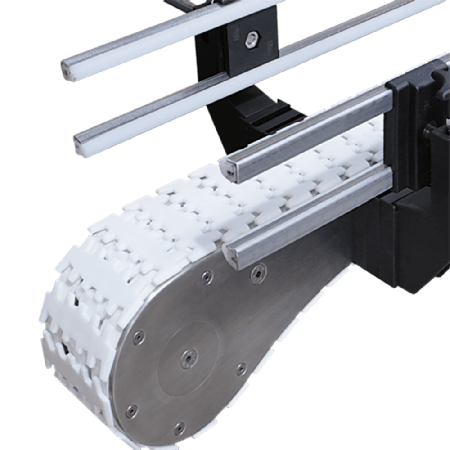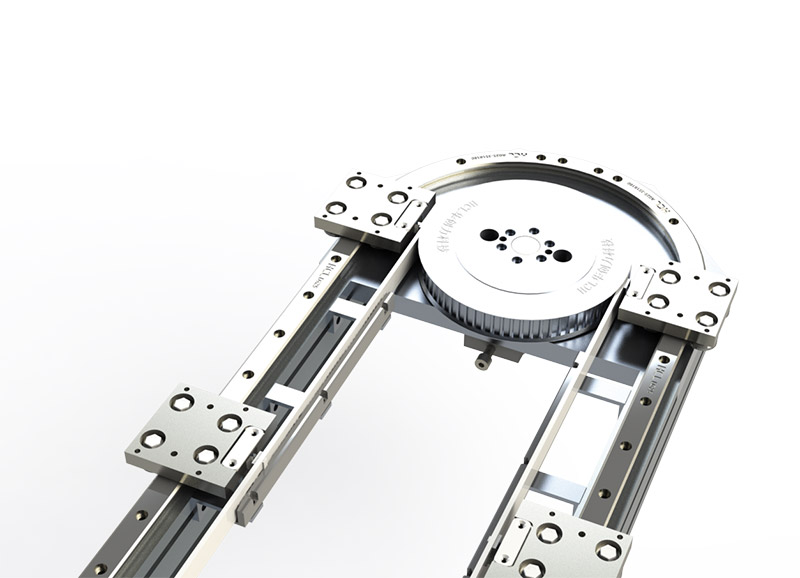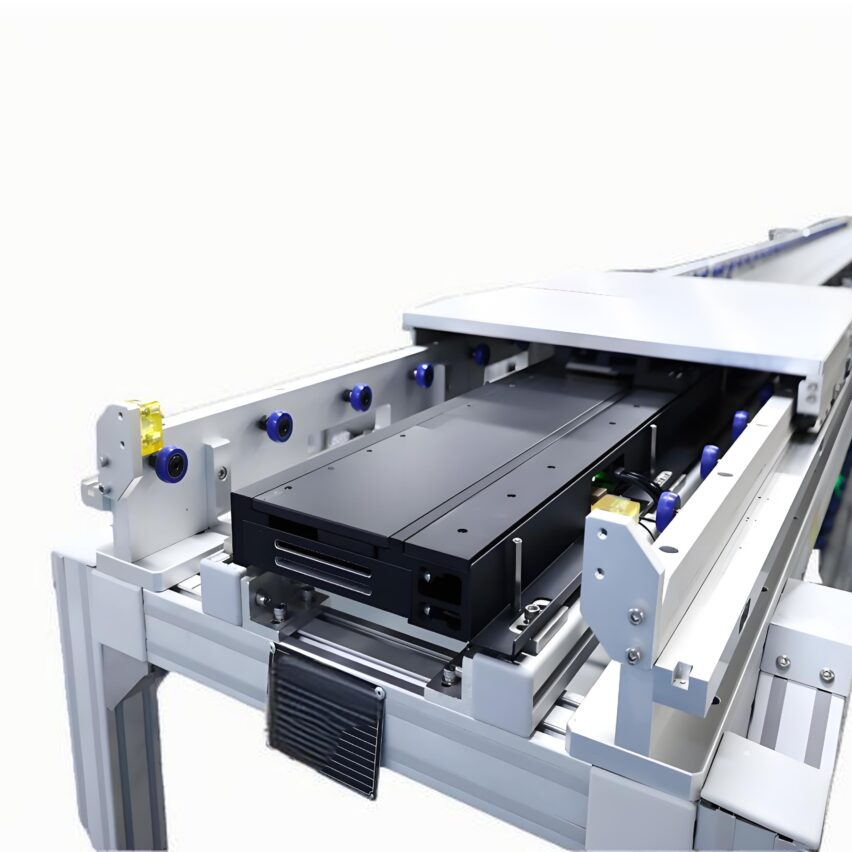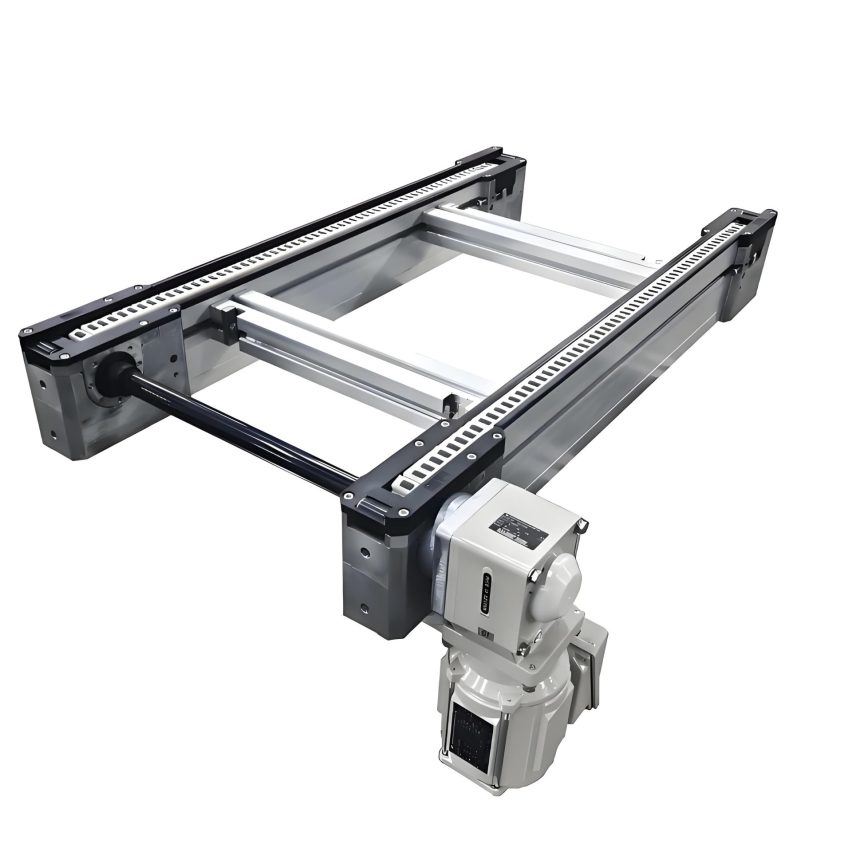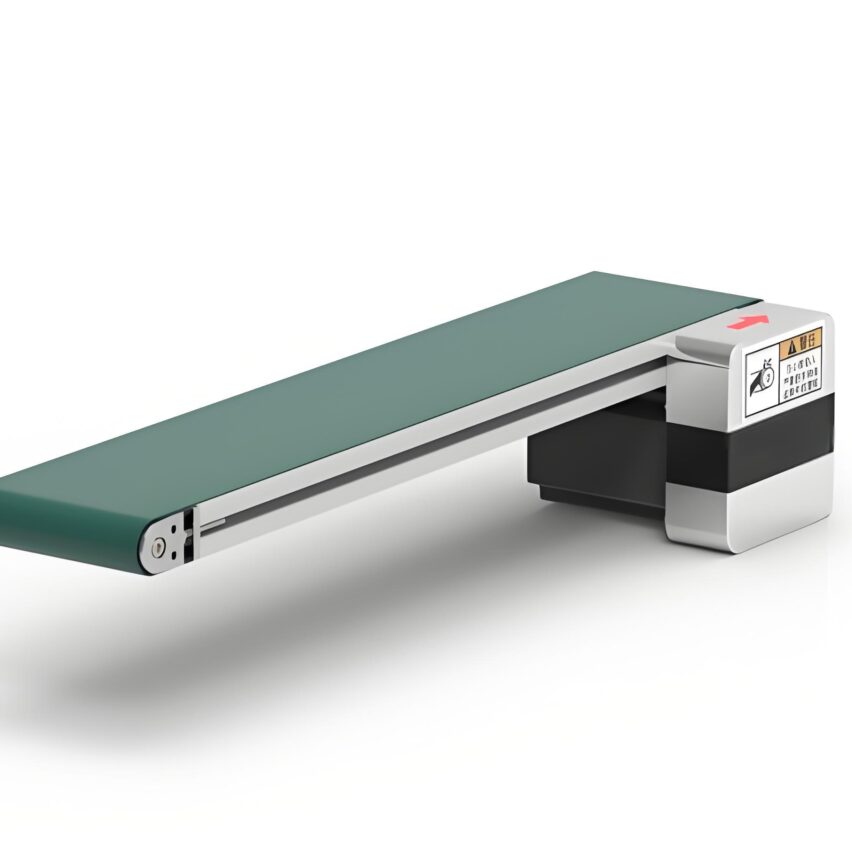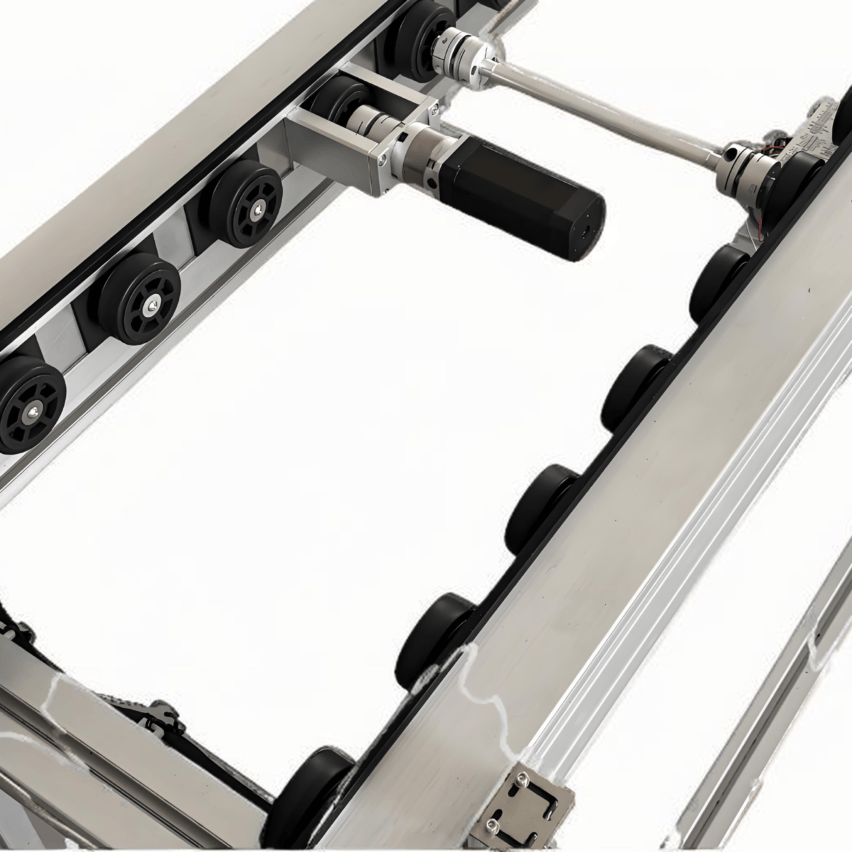I. Speed Chain: The "Dynamic Spine" of Intelligent Toilet Production Line
In the production of smart toilets, the multiplier chain is worth much more than an ordinary conveyor line - it is used by theDiameter difference game between roller (diameter D) and roller (diameter d)It enables the workpiece to be synthesised at 2.5-3 times the speed of the chain (V total = V₁ x (1 + D/d)). This feature directly addresses two core requirements:
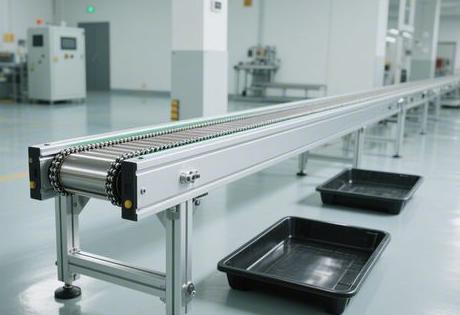
- Flexible beat control: The slip generated by the friction drive between the tooling plate and the rollers allows for precise stops at any position on the production line, providing an operating window for injection moulding, electronic assembly and other processes;
- The space efficiency revolutionDouble-layer speed chain design to achieve "Upper loaded parts production + lower empty board return", with the jacking transfer machine to reduce the line footprint of 40%.
However, the traditional solution exposes fatal shortcomings in the production of smart toilets:
The engineering plastic sprocket rubs at high speed in the aluminium profile rail, resulting in a monthly wear of 0.8mm, a noise of over 85dB and a life of only 6 months. This forces the industry to give birth toComposite technology breakthroughs: Aluminium guide blocks at Tesla's factory extend life to 22 months; Rudong Dayuan carries 2.3 tonnes of ceramic blanks on titanium mounts; and LONGi Green Energy's high-temperature-resistant chain (-20°C to 120°C) presses fragmentation rates down to 0.051 TP3T.
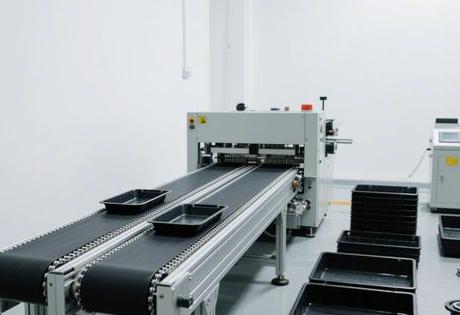
Second, the intelligent toilet production line of the times the speed of the chain structure analysis
Mechanical structures: a balancing act between heavy loads and cleanliness
Typical Smart Toilet Multiplier Chain Line Body Contains:
plaintextmake a copy of1. Main conveying section: 22000×700×700mm chain plate line (δ1.5mm stainless steel plate bending + 100mm pitch chain) 2. Transition section: 23090×700×700mm power roller line (φ76 stainless steel roller) 3. step assembly section: 8000×1100×720mm wide chain plate line (compatible with toilet seat and ceramic body common line conveying) 4. Safety protection: self-adjusting guide block + liquid cooling system, to solve the 350 ℃ glaze sintering thermal deformationThe core breakthrough lies in the combination of materials::
- Light load area: glass fibre reinforced nylon rollers (40dB noise reduction)
- Heavy load zone: carbon steel sprocket + hydraulic buffer module (2.3 tonne cylinder conveying speed fluctuation ≤±0.2m/min)
- Clean area: 304 stainless steel rail + plasma coating (certified 100,000 class clean)
Intelligent control: a data-driven closed-loop ecology
RFID technology is the "nerve centre" of smart toilet production:
- Pallet level traceability: Embedded RFID tags in tooling boards, storing 200 sets of process parameters (e.g. glaze recipes, batches of electronic parts).
- Dynamic Beat Adjustment: CK-FR08-A01 read-write communicates via roller gap, triggering PLC to switch assembly programme
- fault prediction: MEMS sensor monitors chain pressure distribution, fracture prediction accuracy 89%
Zhongshan Shitong case shows that the solution makes the manpower cost drop 62%, product mixing line traceability time from 8 hours to 20 seconds.
Third, how to reshape the whole process of intelligent toilet production by speed chain
Injection moulding: the precise game of temperature and pressure
Smart toilet seat injection moulding needs to be tackledBubble Defect Trap::
- Traditional pain points: manual adjustment of melting temperature and injection pressure, product defective rate of 12%
- Multiplier Chain Integration Solution:
"RFID carries mould parameters on the tooling board → automatic temperature and pressure control for injection moulding machines
"Real-time monitoring of bubble defects by visual sensors → Linkage blocker to divert defective products
After the application in Zhuhai Gree factory, the qualified rate of injection moulding jumped from 88% to 97.3%.Electronic assembly: anti-static battlefield
Smart toilet circuit board assembly facingMicrovolt level static threat::
- Aluminium oxide ceramic nanorails (coefficient of friction 0.07) inhibit charge accumulation
- Workpiece board embedded copper conductor (surface resistance 10⁶Ω), ESD risk reduction 90%
- 0.1m/min peristaltic conveyor, guaranteeing ±0.05mm accuracy of the mounter.
Glaze firing: extreme environmental transport
Ceramic billet conveying needs to be synchronised to meet:
- temperature resistance: Polyimide base material + ceramic coating, resistant to 350°C kiln exit temperature
- seismic defences: Hydraulic Damping System Attenuates 60% Vibration Energy
- cleanness: Fully enclosed chain cover + positive pressure air supply to prevent dust from adhering to the glazed surface
Fourth, industry pain points and technology inflection point
Wall-breaking solutions for wear and tear dilemmas
For sprocket and guideway wear, cutting-edge solutions have been realised:
- Rolling groove + buffer design: raised structure to separate sprocket tracks, polyurethane buffers to absorb impact (wear reduced to 0.1mm/month)
- Self-lubricating chain: Graphene composites infiltrated with chain links, coefficient of friction stable at 0.08-0.09
- Modular replacementGuide block quick release construction reduces maintenance time from 2 hours to 15 minutes.
Pathways to connectivity for data silos
Speed chains are evolving from conveyors todata hub::
plaintextmake a copy of■ Basic layer: PLC real-time acquisition of line speed, energy consumption, fault codes ■ Decision-making layer: digital twin model preview process adjustment effect (such as East Dayuan OEE up to 92%) ■ Synergy layer: MES system docking injection moulding machine / bonder parameters, dynamic optimisation of the beatChangzhou Guangliang's practice shows that RFID and multiplier chain fusion to shorten the process changeover time by 76%.
V. Exclusive insight: the underestimated "capillary revolution"
Through my research on the headline companies, I discovered a counterintuitive phenomenon:
The competitive gap between smart toilet factories is shifting from "robot density" to "speed chain data density"..
- The production line using RFID fusion solution, process changeover efficiency increased by 40%, but the investment is only 1/5 of the robotic system;
- Each multiplier chain generates 2GB of operational data per hour, but the 90% plant only utilises less than 20%.
What's more, it's worth paying attention toEconomics of Modular Retrofit::
plaintextmake a copy ofBasic version (carbon steel track + inverter motor): ¥ 800 / metre → suitable for small and medium-sized enterprises Intelligent version (+ RFID + edge computing): transformation costs +40% → maintenance costs down 70% Green version (magnetic levitation drive): energy consumption down 40% → 14 months back to the capitalThis reveals a truth.The shortcut to upgrading sanitary ware manufacturing is not to blindly pile up robots, but to make every metre of the speed chain have the ability of "perception-decision-making".. When Bosch of Germany developed bio-based nylon chain (50% waste recycling), the winning hand for Made in China may have been - with theSpatial algorithms unleash the data potential of speed chains to keep delivery costs below product logistics losses.
Ask Yourself: Multiplier Chain Triple Strike
Q1: How to solve the risk of breakage in ceramic billet transport?
-Triple mechanical protectionis the key: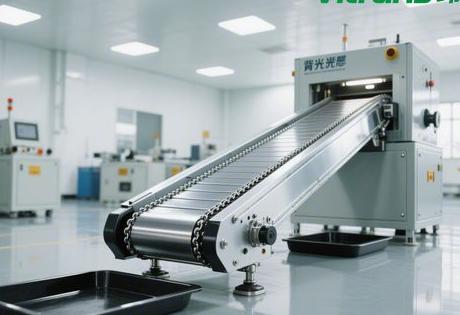
- Hydraulic cushioning module: start/stop phase injected with damping fluid, shock attenuation 40%
- Vector control motor: speed gradient according to sin curve, avoiding sharp stop (Great Wall Motor measured breakage rate down to 0.8%)
- Self-balancing plate: counterweight + gyroscope dynamically adjusts the centre of gravity, adapting to shaped blanks.
Q2: How can old production lines be intelligent at low cost?
Progressive transformation pathMore feasible:
①Perception Plus:RFID read-write (¥3000/set) + work board labelling (¥20/piece)
②Control upgrades: Edge computing module parsing data, replacing 30%PLC function
(iii)Energy recoveryRegenerative braking device intercepts steering kinetic energy, saving 180,000 kWh of electricity per yearQ3:How does Peppy Chain achieve full process traceability?
Data carriers + spatial positioningConstitutes the core:
- Unique RFID tags embedded in each tooling board to record glaze batches, electronic parts SN codes
- Readers capture data at shift/turn points to build spatio-temporal trajectory maps
- The timeframe for locating the root cause of defective products was reduced from 8 hours to 10 minutes (a sanitaryware company with an annual stop loss of $2.7 million).




